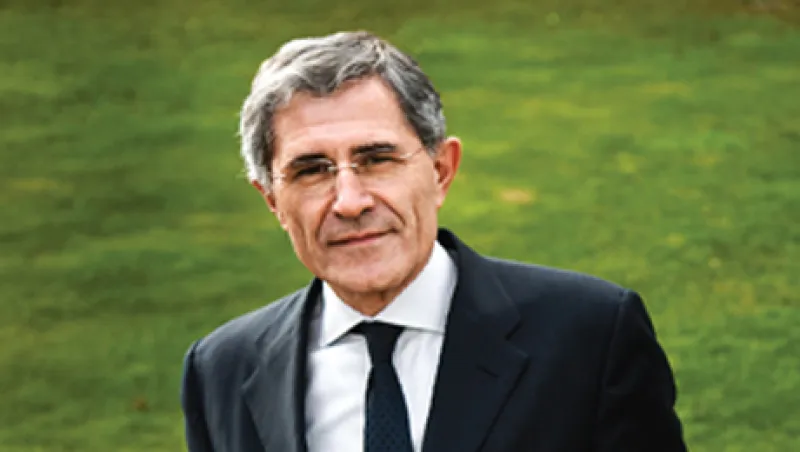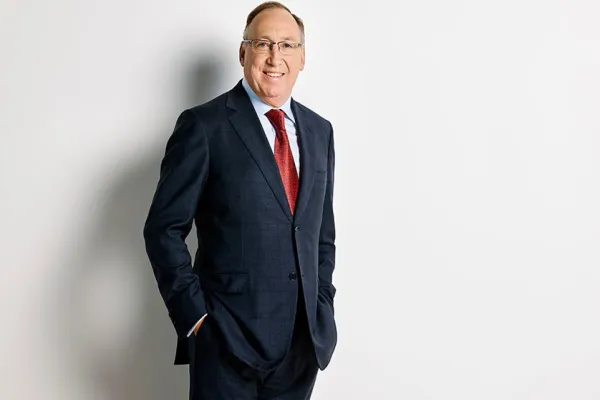The Amazon River basin, home to 10 percent of the world’s species and purifier of 1.5 gigatons of carbon dioxide a year, is a global ecological treasure trove. Yet, French energy giant GDF Suez obtained ready permission from Brazil to build a 3,700-megawatt hydroelectric dam on the Madeira River, a chief tributary of the Amazon. Astute international corporate relations explain why.
Known informally as the Jirau plant, the dam is expected to generate enough clean power for the equivalent of more than 10 million homes when it is fully operational in 2013. Significantly, the $6 billion cost includes $600 million to preserve the surrounding rain forest, protect fisheries and build housing and provide health and educational services for displaced indigenous people.
GDF Suez, often described as the world’s biggest utility, today finds emerging markets as appealing as countries like Brazil, China and Saudi Arabia find GDF Suez’s ability to provide electricity, natural gas and alternative energy in an environmentally and socially acceptable fashion.
Driving the Paris-based company’s latest global thrust is Gérard Mestrallet, the animated chairman and CEO who has steadily extended GDF Suez’s global domain since he became chief executive of its predecessor Compagnie de Suez in 1995.
At the time, the nearly 200-year-old Suez, which had built the Suez Canal in 1869, operated primarily as a bank, but one that controlled much of the big French water company Lyonnaise des Eaux. Suez’s extensive exposure to French real estate had caused its balance sheet to spring a leak. Mestrallet audaciously sold what some considered the soul of Suez, Banque Indosuez, to Crédit Agricole for Ff 6.3 billion ($1.38 billion) to concentrate on energy engineering. And deals.
Several acquisitions later GDF Suez, by now a global energy conglomerate, had sales in first-half 2011 of €45.7 billion ($65.9 billion) and earnings before interest, taxes, depreciation and amortization of E8.9 billion; both revenues and income are up about 8 percent over the first half of last year.
Mestrallet’s deal making has yet to slacken. In February of last year, GDF Suez completed a $23.4 billion reverse takeover of British utility International Power, thereby quadrupling its U.K. power production, to 11 gigawatts, and considerably expanding its presence in emerging markets. Then last month the CEO sold a third of GDF Suez’s exploration and production division to China Investment Corp., that country’s sovereign wealth fund, for €2.3 billion.
The son of a stationery-store owner, Mestrallet was admitted to the elite École Polytechnique and École Nationale d’Administration and started his career as an economic analyst in the government’s aviation agency. He joined Suez in 1984 as a project manager.
Now 62, Mestrallet is considered a steady hand as a manager, but also a champion of the environment among utility CEOs and a visionary within his fast-evolving industry. He has a reputation as a shrewd predator on the M&A battlefield.
He spoke in June and again in August with Institutional Investor Contributor Jayne Jung about GDF Suez’s newest conquests and its increasing emphasis on emerging markets.
Institutional Investor: Why are you so interested in emerging markets?
Mestrallet: We started to build a very strong position among independent power producers in North America, in Latin America, in the Middle East, in Thailand and in Singapore ten years ago through Suez. It had become more and more obvious to me that growth in the energy sector in Europe would be more limited because of lower economic growth and regulatory restrictions. And this was even before the financial crisis. It was also obvious to me that Suez had the business acumen, the teams and the know-how to be a leader in independent power production in emerging countries.
How does the recent China deal fit into this strategy?
It is really an industrial strategic partnership that will contribute to further opening the Asian market to GDF Suez. China will be a major LNG [liquefied natural gas] importer, and GDF Suez happens to be one of the world leaders in LNG. Therefore a deal with China appeared to be strategic and natural.
Utility companies are by nature sensitive to economic downturns. How were you affected by the 2008 financial crisis and its aftermath?
We are one of the rare companies that has not seen its ebitda drop during the crisis. It has been stable for two years, and now we can start to grow profits again. In fact, we have promised the market 15 percent growth for the next two years.
What was the thinking behind your merger with International Power?
We knew the company very well. They have the same approach as we do; they have the same view, the same strategy in emerging countries. The synergy was clear and very simple. We wanted to make a deal — a friendly deal — while preserving our balance sheet. So we formed a combination of IP and our international division [in effect, doing a reverse takeover in which GDF Suez swapped its international assets for majority stock ownership of a new company]. We represent 70 percent of the new company [still called International Power]. That is a very good deal. And it was without any polemics, because we had the agreement of the two managements, the two boards and the shareholders.
You’ve grown huge through a series of large utility mergers over the past decade: Suez and IP, but also Electrabel, Lyonnaise des Eaux, Société Générale de Belgique and Tractebel Energia. Do you worry that GDF Suez is no longer nimble enough to compete with local utilities and sovereign wealth funds?
On the contrary, we consider size a competitive advantage. Our returns on international operations are very high. We have a goal: to control the full energy chain, from financing and design to engineering and construction to controlling operations and managing a plant. We seek full control. And by raising nonrecourse project financing and also welcoming equity partners, we are able to invest in only the equity portion of a project, if, say, that represents 20 percent while nonrecourse debt is 80 percent. On top of that, we receive a fee as the project developer and an annual fee as the operator. They represent increased profitability on projects.
What are you budgeting for new projects, like Jirau?
We have decided to cap our investment budget at €11 billion per year to maintain our A/A– credit rating and protect our balance sheet. We have the strongest balance sheet in our sector [total assets as of 2010: €184.7 billion] and want to preserve it. But it would be possible for us to invest €20 billion in projects every year. We can thus take the best ones — those with the best balance between risk and return. Smaller utilities have nothing close to these opportunities.
How much of that budget is set aside for emerging markets?
Our group strategy is to accelerate growth in Latin America, the Middle East and Asia, so we want 30 percent of our new projects to be in emerging countries. IP offers a fantastic platform for growth in emerging countries; it allows us to catch growth where it is.
What’s it like doing projects in emerging markets versus, say, Western Europe?
Well, there is a big difference, of course. For instance, in Brazil, Chile and Peru, regulation is very clear-cut and the rules stable. And they are adapted to the needs of countries that want to increase their power capacity. We like that.
What about environmental restrictions?
There are environmental constraints everywhere in the world, especially in countries like Brazil. That’s why we’re spending $600 million for environmental and social projects in connection with the Jirau dam hydroelectric project. That is much more than what we have seen done in Europe.
What would you, as an energy company CEO, do to reform environmental regulations?
What I’d want to insist on is that environmental constraints be integrated into all big projects right from design and conception. This would apply everywhere in the world.
And what happens now?
It is done today more in separate negotiations. You design a project, and then later on environmental regulators ask for more protection and more constraints. This should be integrated into the project from the beginning. That is the way for our industry to protect sustainable growth. We know that big dams from time to time draw protests from environmentalists and NGOs [nongovernmental organizations]. Therefore we have to be very, very careful to work with NGOs, not just official agencies, to integrate their ideas during the early conception of a project. This is in the best interest of a country, the people living in that part of the world and the planet. But it is also in the best interest of energy companies if they want to continue to grow in the coming ten to 20 years.
Did the troubles at the Fukushima Daiichi reactor after Japan’s earthquake change your attitude on nuclear power?
Fukushima will have a limited impact on a group like ours. Our business model is one-third electricity, one-third natural gas and one-third services. Nuclear represents 10 percent of our electricity production and only 3 percent of revenues for the whole group. Today we have 19,000 megawatts of power plants under construction worldwide, representing hydro, gas turbine, wind power, some coal, geothermal and solar — but no nuclear at all. Of course, we want to preserve our existing 3 percent nuclear share.
What about places like Belgium, where nuclear is critical?
Nuclear power will have to be reduced [around the world], but we don’t know if that will be the case in Europe. There we have to apply stress tests to our seven nuclear plants, and then, if those are successful, we will discuss extending the plants’ longevity with government officials.
Is a country’s nuclear power choice more of a political decision than a scientific one?
Yes, although perhaps it is helped by scientific research. But I want to be clear. This will not change the rate of growth for GDF Suez. If there are no nuclear projects, we will still invest €11 billion in projects, but it may change the nature of our investments. In the end, we may have less gas and more renewables.
[In a follow-up to her earlier interview, Jayne Jung in mid-August asked Mestrallet for his reaction to the then-escalating European debt crisis.]
I would like to salute the efforts and the swift reaction of European governments and, more specifically, France and Germany. At GDF Suez we took early action not to be too exposed to troubled European economies and to benefit from faster-developing economies. And in March, GDF Suez launched the first euro-denominated 100-year bond issue. The group has now secured its financing needs until 2016, with 84 percent of our net debt at a fixed or capped rate. • •






